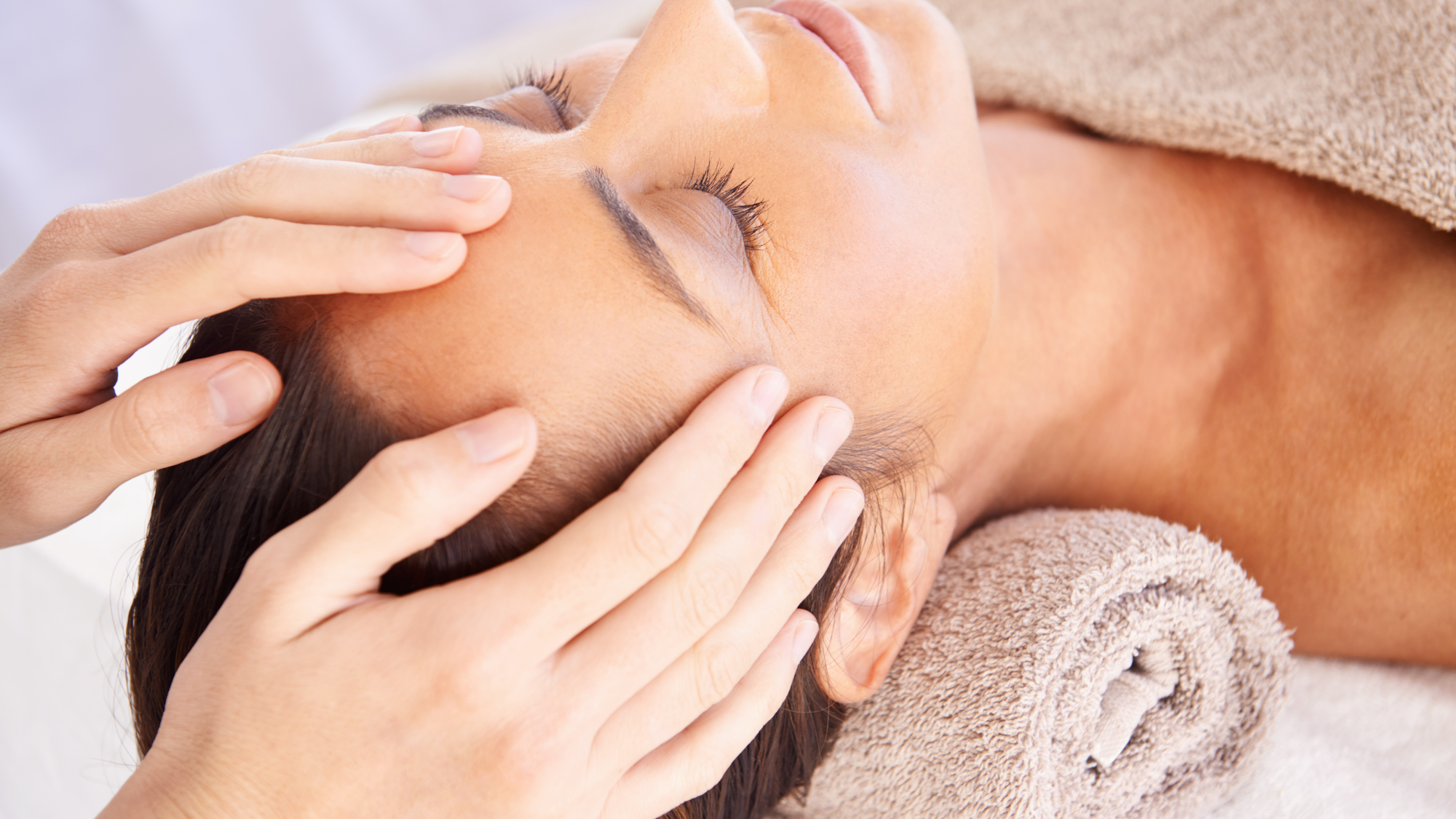Healing Touch

What is it?
Healing touch is an energy, biofield-based practice, where practitioners use their hands in an intentional way to influence the energy of the patient. In particular, the energy this practice attempts to influence is the one surrounding the body as well as the energy centers that control the flow of energy in the body.
Healing touch is based on the belief that human beings have fields of energy that interact constantly with their environment. The goal is to purposefully use the energetic interaction between the practitioner and the patient to restore harmony to the patient’s energy system. In doing this, the client is in a position to self-heal.
Core philosophy
Healing touch is grounded in the same principles as Asian traditions, such as qigong, and reiki, which are based on the concept of life energies. All these traditions see the necessity of maintaining a balanced flow of these energies for good physical, mental and emotional health.
The theory behind healing touch is that by opening, balancing, and clearing the energy system, one may facilitate healing of the body, mind, and spirit. All energy therapies focus on removing what’s referred to as “energy congestion” that forms in an individual’s energy fields and/or energy centers. Once these disturbances are cleared, the energy channels are free to complete their task of bringing body, mind, and spirit together to promote healing. It’s also thought that by restoring balance to energy field disturbances, one can prevent future illness.
The specifics of how it works are still somewhat of a mystery. It’s hard to definitely describe the exact mechanisms the healing experienced. However, the cumulative results of many studies on energy medicine and consciousness indicate strong agreement that something is happening. And of course, that recipients of healing touch do respond positively to these kinds of energy therapies.
Healing touch and reiki
A common question about healing touch is its apparent similarities with reiki. While both practices are energy-based and involve touch or near-touch techniques, there are some differences between them. The first one is that healing touch sustains that everyone has the ability to influence healing energy by using intention. Reiki, in contrast, asserts that practitioners need to receive an attunement from a reiki master in order to treat others.
An additional difference is in the approach itself. Reiki tends to have a stronger spiritual component while healing touch sessions follow a standard 10 step sequence. In reiki, the approach is less standard and depends on the practitioner’s beliefs and individual approach. Lastly, reiki training is not standard as the reiki master determines the content. As a result, there are no formal certifications for reiki practitioners at the moment. Healing touch, on the other hand, has a standardized curriculum and there are certifications available.
History
Janet Mentgen
Janet Mentgen, RN, BSN was an energetically sensitive nurse. Her drive was to deepen and expand the connection between nurses and their patients. She saw the positive effect of touch while using various energy techniques and modalities. Janet began using her energy-based healing skills in 1980.
Janet was a practicing nurse for 43 years. Her early work was with the U.S. Navy, then as an emergency room nurse, and then home health care nurse. Her real love of patients and the nurse connection began emerging as she developed her “healing touch” methods. She shared her methods by teaching continuing education classes for nurses at Red Rocks Community College in Lakewood, Colorado. Her research, with the application within her private practice, and her teaching of energy medicine earned her the Holistic Nurse of the Year Award from the American Holistic Nurses Association in 1988.
Expanding the practice
In 1989, Janet formally created Healing Touch as an energy medicine program. It began in 1990 as the Healing Touch certificate program sponsored through the American Holistic Nurses Association (AHNA) coincided with the providership of continuing education for nurses by the Colorado Nurses Association. In 1993, Healing Touch was certified by AHNA. That same year, Janet formed the Colorado Center for Healing Touch dedicated to bringing this practice to millions of people around the world.
In 1996, Janet founded Healing Touch International, Inc. as a non-profit educational and membership organization. Its purpose is to administer the healing touch certification process for Practitioners and Instructors. In 2008 the certification process was moved to the Healing Touch Certification Board.
Within these few short years, Janet Mentgen revolutionized the medical model to include a clinical approach to energy-based therapy. Her legacy lives on through the Certified Instructors and Certified Practitioners and thousands of students who are bringing a holistic approach to healing. Due to the extraordinary success of the program, the company began using its other legal name, Healing Touch Program™, in June of 2005. This change recognizes the global expansion of Healing Touch in hospitals, communities, hospices, clinics, schools of nursing, and the long-term care centers throughout North America, Central America, South America, Europe, Africa, Australia, Asia, and New Zealand.
Benefits and uses
Research studies suggest that healing touch is effective for physical and mental relaxation, pain management, anxiety and stress reduction, and increasing one’s sense of wellbeing.
Healing touch is used clinically (often by nurses in hospitals) to:
- Promote relaxation before and after medical procedures (such as surgery, childbirth, and diagnostic procedures) to aid in quicker recovery
- Reduce acute and chronic pain
- Promote wound healing
- Manage symptoms of chronic conditions, such as fibromyalgia or chronic headaches
- Improve sleep
- Reduce fatigue in cancer patients receiving radiation
- Enhance the immune system
Most clients feel peaceful and calm after a session. Many report an increased sense of relaxation in the body and in the mind. Because the treatment does not interfere with any conventional or alternative therapies, it can be used to increase relaxation and relieve anxiety during many illnesses.
Because healing touch is a noninvasive energetic technique, there are few safety concerns. In addition, practitioners assess each patient and tailor the level of energy therapy to meet each patient’s needs. Healing touch is not a substitute for medical treatment and it is not a cure. Healing touch complements conventional medical care and helps the body heal.
Who practices it
There are close to 100,000 who have completed at least one level of training on healing touch around the world. Healing touch is present across geographies around the world with more countries becoming involved every year.
The first step to finding certified healing touch practitioners is asking your healthcare providers if they are certified or know someone who is. If you are in the hospital, ask your nurse if there are certified practitioners on staff who incorporate healing touch in their professional practice and if you could request a session.
Alternatively, you can also find a certified practitioner by looking at Healing Touch Program and Healing Touch International. Another very useful resource is the Worldwide Directory of Healing Touch Practitioners. The primary considerations in choosing a practitioner are your personal comfort with the practitioner and your confidence in their experience.
Becoming certified as a healing touch practitioner requires several steps. The first step involves a continuing education program that consists of several levels of training. These levels move from beginning to advanced. During this training, students learn more than 25 techniques – from basic to complex. After completion of the classes, students begin a minimum one-year mentorship with a certified practitioner.
What to expect
The first session involves a consultation in addition to the healing touch session. The practitioner will ask a series of questions about your physical, mental, emotional, and spiritual health issues, and will answer questions about healing touch. Then you lay fully clothed on a treatment table while the practitioner gently places their hands slightly above or on the body. The practitioner begins the session by focusing the energies and by becoming deeply intentional throughout the session.
While the description of a healing touch session sounds very much like a massage, they are very different. Massage manipulates the muscles through pressure. When doing healing touch the practitioner uses gentle touch and/or makes sweeping movements with their hands near the body.
The session generally lasts 40 to 60 minutes, and people frequently report feeling deeply relaxed and peaceful during and after the session. The number of sessions for healing touch is dependent upon the needs of the client.
After each session, the practitioner reassesses based on the client’s needs and plans the care appropriately. This will include the need for further treatments, referrals to other professionals, and instruction in self-care as needed.
Interesting facts
Healing touch, like other energy-based treatments, seeks to restore the body’s natural ability to self-heal. Here are some interesting facts based on some studies over the years, all cited by The University of Minnesota’s Earl E. Bakken Center for Spirituality and Healing.
- In 1995, Slater studied twenty-three patients with pain from abdominal surgery. One group received two healing touch techniques and the other group simply had a nurse pay attention to them. Slater found that there was more pain relief with the healing touch techniques than from the nurse’s attention alone.
- A 2001 study by Guerrerio, Slater, and Cook examined the effectiveness of Healing Touch in reducing fatigue from radiation therapy in sixty-two women with gynecological and breast cancers. The healing touch group had a greater reduction in fatigue than the control group, as well as more improvement of their depression, anxiety, and anger.
- A 2003 study by Post-White, Kinney, and others measured the effects of healing touch and therapeutic massage on cancer patients. They found that healing touch was effective in reducing pain, anxiety, and fatigue as well as increasing relaxation.
- In 2006, DuBrey studied the effects of healing touch on patients recovering from alcoholism. The heart rate of those patients went down more, they were happier and had a greater reduction in pain.
- Zimmer, Meier, and Rold reported on the effect of healing touch on children’s pain and comfort in the postoperative period. The study provided preliminary support for the use of healing touch therapy to decrease pain and increase comfort for children during the postoperative period.
Closing statement
Healing touch is a noninvasive, energy-based therapy where practitioners channel the energy surrounding the body in an intentional manner to facilitate physical, emotional, mental, and spiritual health. The techniques of healing touch allow the practitioner to clear, energize, and balance the human field in a heart-centered way, allowing for self-healing to occur.
Like with other energy-based treatments, the acting mechanism of healing touch is not yet fully understood. However, empirical evidence supports that healing touch provides a positive to patients under different circumstances. Likewise, similar to other energy-based therapies, there is growing adoption of healing touch in different settings, which will open up the opportunity for further research and applications.
Newsletter
Sign up for emails to get the scoop on our latest articles, new developments and more.

